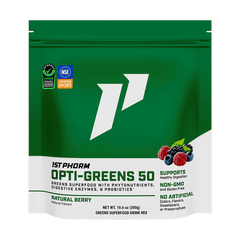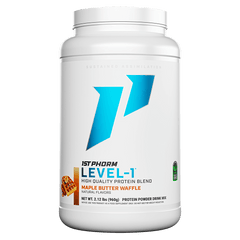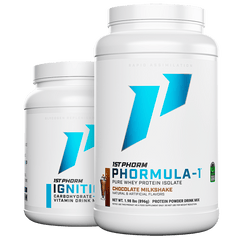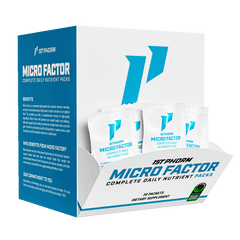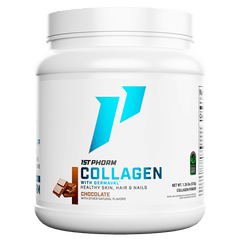Omega-3 fatty acids, commonly referred to as Fish Oils, have been talked about more and more frequently over the last two decades … and have earned a lot of respect due to their numerous benefits.
But, even though "Fish Oil" is a household term at this point … most people have no idea what omega-3 fatty acids are or what they do!
They just “know” that it’s a healthy thing to do or something that they should do.
There's a problem with that … if you don’t really understand what they are, why they are beneficial, and the true impact they can have on you … are you going to make it a priority to use them?
Are you making sure to work omega-3 foods into a nutrient-dense diet?
How do you know if you are getting enough omega-3s into your day?
Are you getting too few omega-3 fatty acids?
How do they benefit your overall progress?
That might have your gears turning a little bit as you don’t know those answers … but don’t feel bad, most people don’t!
Shoot, I didn’t for many years and overlooked the power and benefits of omega-3 fatty acids.
But, it’s worth investing 5 minutes to read this blog and educate yourself, because omega-3 fatty acids are a crucial nutrient for overall health.
Your body doesn’t produce omega-3s on its own, which makes them “essential fatty acids” — you must get them through nutrition (mainly fatty fish like tuna, salmon, mackerel, sardines, etc) and supplementation.
Now, one of the reasons there is a bit of confusion about omega-3 fatty acids is because there are so many benefits!
They can help in many ways, but are most commonly known for reducing the risk of heart disease, helping with proper fetal development, improving joint health, favorable changes for fat loss or weight management, helping to improve cognitive function, and many more.
Plus, those benefits aren’t reserved for a specific age group or gender, these essential nutrients support and promote optimal health for all ages!
So, let’s jump into your questions…
What Are Omega-3 Fatty Acids and Why Do I Need Them?
Hold on for a second, these next few paragraphs are going to get a little heavy on the scientific terms, but I promise I will make sense of it all.
Omega-3s are a specific type of polyunsaturated fatty acid, meaning they contain more than one double bond in their chemical structure.
The “3” refers to where in the chemical structure the first double bond occurs.
As stated above, omega-3 fatty acids are essential because your body can't produce them on their own.
The three most common omega-3s found in food are ALA, EPA, and DHA.
Alpha-Linolenic Acid (ALA):
This plant-based omega-3 is found in green, leafy vegetables, flaxseeds, chia seeds ... plus canola, walnut, and soybean oils.
ALA is known as a short-chain omega-3, meaning your body has to convert it into longer-chained EPA and DHA to synthesize it.
This process is rather inefficient, and a very small percentage of the ALA you consume is converted to the long-chain version your body needs.
Eicosapentaenoic Acid (EPA):
EPA is a fatty acid found in oily fish, algae oil, and krill oil. This is one of the main omega-3s you hear about.
It, along with DHA, is one of the omega-3s that give your body the countless health benefits of omega-3 fatty acids when enough of them are consumed daily.
Docosahexaenoic Acid (DHA):
This fatty acid is also found in oily fish, krill oil, and algae oil. Once again, DHA and EPA are the two most important Omega-3s, and you want to consume them each and every day.
The good news is … though it's hard to track your Omega-3s specifically from your diet every day, by supplementing with a high-quality fish oil like Full-Mega (which has a high EPA and DHA content), you can have peace of mind that you're giving your body a great source of Omega-3s.
Now, to fully understand omega-3 fatty acids, you need to know a bit about omega-6 fatty acids, which are also essential fatty acids.
See, your body also needs omega-6s to function properly.
Unfortunately, we typically have way more omega-6 fatty acids in our diet than omega-3s (in the “standard” American diet).
For proper function, your body prefers a 1:1 ratio to 4:1, but many "typical" diets contain a ratio closer to 20:1 or 30:1 (omega-6:omega-3 fatty acids).
When this balance is off, and you have an overabundance of omega-6s, it can lead to excessive inflammation throughout the body and significant health issues.
Can You Become Deficient in Omega-3 Fatty Acids?
Well, based on the definition of deficient: not having enough of a specified quality or ingredient … then I would say yes, you can be deficient in omega-3 for your goals and lifestyle, depending on what they are.
We already know that most people don’t get enough omega-3 fatty acids, according to an analysis of dietary data about U.S. adults.
There is no official daily value assigned to omega-3s, but the American Heart Association recommends two or more 3.5-ounce oily/fatty fish servings each week.
That number is for an average American, not someone who is actively working toward their fitness goals, and puts more wear and tear on his or her body.
Your needs could be higher ... and in many cases, they are.
How Would You Know if You Are Low in Omega-3 Fatty Acids?
Here is a list of some common symptoms and signs to look out for...
• Soft, peeling, or brittle nails (or slow-growing nails)
• Attention deficit, restlessness, poor concentration, or poor memory
• Depression, anxiety, or mood swings
• Dry, flaky, cracking, or callused skin
• Dry eyes
• Dehydration, thirst, dry mouth/throat, or frequent urination
• Dry, dull, or brittle hair (also dandruff or “cradle cap”)
• Delayed recovery
• Stiff or painful joints
• Excessive earwax
• Allergy symptoms (eczema, asthma, hay fever, hives, etc.)
...and while this is not a complete list, and everyone will be different if they experienced these or not, I think we can all agree that these don’t sound pleasant.
Like I said earlier, I didn’t understand omega-3 fatty acids for a long time and overlooked some of those symptoms above because I simply didn’t know it could mean being low in omega-3s!
For most people, it is difficult to eat the required amounts of wild-caught oily fish, which is typically much more beneficial than farm-raised fish ... to fulfill their need for omega-3 fatty acids every day, and therefore add a high-quality omega-3 supplement to their diet.
What are the Benefits of Omega-3 Fats?
I told you earlier that there are many benefits to omega-3 fatty acids … so let’s go over a few more of them right now.
8 Benefits of Omega-3 Fatty Acids
• Help Improve Heart Health
• Can help with Cognitive Function
• Help Reduce Inflammation
• Supports Healthy Bones and Joints
• Can Improve Sleep Quality
• Beneficial For Infant and Child Development
• Supports Healthy Hair, Skin, and Nails
• Helps with fat loss and weight management
Omega-3s and Fat Loss
I do want to dive a bit deeper into this topic, because so many people are trying to improve their body composition.
Omega-3s have positive effects on helping to regulate cortisol and improving insulin sensitivity.
Cortisol is considered a "stress" hormone that is actually essential to our health. However, when levels are elevated for longer periods of time, it can negatively affect your ability to lose fat.
Omega-3 intake can help regulate these levels, and in turn, can lead to more fat loss!
In addition, consuming enough omega-3s can be linked to improved insulin sensitivity. This is your body's response and ability to use carbohydrates.
Improving your insulin sensitivity can increase the efficiency with which your body uses carbohydrates and regulates blood sugar levels!
Basically, it can allow you to store carbohydrates as fuel in a positive manner, instead of storing them as fat ... while helping your body to be more effective at using body fat as fuel!
The Importance of Omega-3 Fatty Acids
As you read, omega-3 fatty acids are incredibly important to your health and the proper function of your body on a day-to-day basis.
Omega-3 fatty acids bring a large range of health benefits to all ages!
Therefore, you will want to make sure that you are getting in a minimum of 2-5 servings of wild-caught fatty fish each and every week, and/or utilizing a high-quality omega-3 supplement (remember, omega-3 fatty acids can’t be produced in the body).
At 1st Phorm, we offer Full-Mega, which has an impressive 1.5 grams of EPA & DHA + 2.5 grams of total omega-3 fatty acids per serving! Full-Mega is sourced exclusively from fresh, cold water wild-caught Icelandic fish. To ensure a high-quality fish oil, the fish are caught using sustainable fishing methods and green technology.
If you have any additional questions or need any help in the meantime, don't hesitate to reach out to us. We have a full team of NASM Certified Personal Trainers and Nutrition Coaches right here in St. Louis, Missouri.
Just give us a call at 1-800-409-9732 or send us an email at CustomerService@1stPhorm.com. We're available Monday through Friday from 6 AM to 8 PM Central and Saturday & Sunday from 9 AM to 7 PM Central. We'll be more than happy to help in any way we can!


